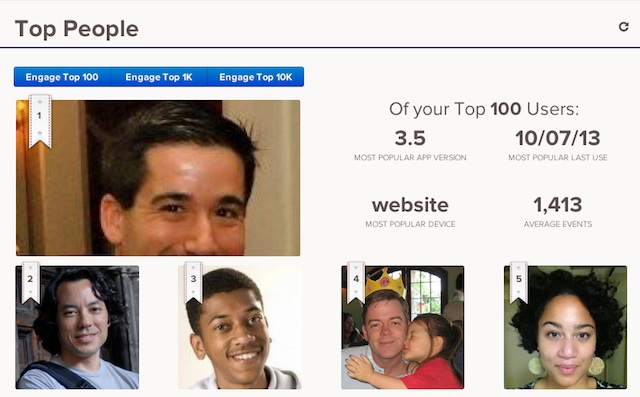If you’re a mobile publisher, getting lots of people to install your app is nice, but if you can’t convince any of them to actually use your app, much less spend money, well, that’s a problem — one that a startup called Kahuna is trying to solve.
Co-founder and CEO Adam Marchick has experience thinking about user engagement, having worked on Facebook’s growth team. More impressively, he said he approached “the best growth marketers in the world,” including Chamath Palihapitiya (Facebook’s former vice president of growth), and “they all personally invested.”
Today, after testing the product with a limited group of customers, Kahuna is opening to the public, and it’s also announcing that it has raised $2 million in seed funding from SoftTech VC, Costanoa Venture Capital, Tim Kendall (head of product management at Pinterest and former director of monetization at Facebook), BloomReach CEO Raj De Datta, Lee Linden (head of commerce at Facebook), Kiwi CEO Omar Siddiqui, RentJuice co-founder David Vivero, Matt Wyndowe (who’s currently product manager for identity growth at Facebook), Palihapitiya, and others.
Marchick described Kahuna’s product as “an engagement engine” that “understands customer behavior on mobile and web and automates marketing campaigns based on usage patterns.” The product comes with more than 50 pre-built engagement campaigns — namely, automated outreach strategies for push notifications and emails — that customers can then tweak based on A/B testing and the initial results. Marchick added that Kahuna learns from campaign data over time: “The cool thing about the engine is it gets better the longer it runs.”
While different companies will want to use different strategies, Marchick said the two big things that many of them don’t understand are the importance of recency and the importance of personalization.
“If there are users who browsed but didn’t purchase anything, or who wanted to use a feature but didn’t, and you don’t send a message to every single one of them within five seconds, you’re missing out,” Marchick said. “You can’t just message them four days later.”
Does that mean apps using Kahuna are going to send a ton of annoying push notifications? Marchick said the opposite is actually true — his customers send fewer messages and find that those messages more effective.
“Push messaging feels a lot like email 12 years ago,” he said. “It’s a new, bright, shiny object that’s scary, but if you do it right, it has a 5x response rate versus email.”
This approach seems to be paying off. Among “a doze”n beta customers, revenue has reportedly risen by more than 15 percent, and mobile gift card service Gyft says it saw a 240 percent in increased users and a 17 percent boost in revenue.
Kahuna isn’t just for mobile apps. Marchick said it also works on the desktop web and mobile web, but he suggested that the problem is most obvious on mobile — Kahuna estimates that 90 percent of mobile app installs provide zero value.
By the way, a number of companies seem to be turning their attention to mobile engagement. For example, Facebook recently revamped its Mobile App Ads to include custom calls to action that allow mobile advertisers to re-engage with users.

